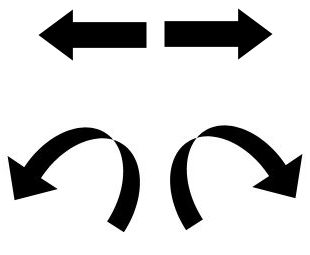Hands-on
If you're shopping for a DAB radio and have found one with the features-set you want - and looks you're happy with - the two key questions you need answered are, how easy is it to use and how good does is sound?In terms of ease-of-use, it's hard to fault the Tempus if, that is, you're comfortable with choosing set-up options through a menu, rather than a big bank of dedicated function buttons. To make set-up changes, you press the menu button then turn the tuning knob to scroll through the eight first-level menu options. Once you find the one you want, you push in the tuning knob and then turn it to scroll through those specific options and press again to make a selection.
This can involve quite deep menu diving a good bit of action with the tuning knob but once you get the hang of how it works (and that's not hard), using the menu system is pretty painless. We had no problems setting up multiple alarms, changing the standard snooze time (eight minutes by default but variable between five and 59 minutes) or making any other changes.
We only tripped up once, when searching in vain for the menu setting for changing the sleep time - the time after which the radio switches off when you go to bed. And, the reason why we couldn't find it was because it's not there - there is a dedicated sleep button and you press that repeatedly to increase the time in 15-minute increments. D'oh!
One thing that could make the menu selections easier would be an LCD big enough to show each level of menu option simultaneously. But to do that would require an impractically large and costly display, rather than the 60mm x 15mm, two-line display that PURE uses.
In terms of the sound quality, we know for sure that the Tempus isn't quite as good as the Dualit model we last looked at. But that is almost inevitable given that the Dualit has a far bigger bass-reflex port, is largely constructed of cast aluminium and costs more than twice as much as the Tempus. Were things any different, the world might have shifted on its axis.
However, the sound is excellent - with no significant distortion even at the highest volume level. We asked a couple of people who'd not heard the Dualit to rate the sound from PURE's radio and both were impressed. One of them, a classic-music lover who'd suffered from poor-quality reception on analogue table-top models, was quite knocked out by what he heard, despite it being strictly mono, and by the DAB features that the Tempus offers.
That same music-lover, though, spotted one little thing about the display which just might make the radio slightly easier to use. He was set the task - without seeing the manual - of trying to quickly figure out how to change settings. He struggled but once he was shown the way that the menu button and tuning knob work together, he had no trouble.
However, he did observe that that the left-pointing and right-pointing arrows that appear on the display (one at each end) could usefully be replaced by circular arrows. The reasoning is that circular arrows do genuinely say to the user, "turn the knob to go this way or that" - unlike the straight arrows.
 Which pair of arrows best says,
"turn the knob?"
Which pair of arrows best says,
"turn the knob?"The Tempus is a stereo radio but doesn't have stereo speakers. You can hear both channels by listening on headphones, by connecting up to a stereo system (there are analogue and digital outputs) or by adding one of PURE's ST-1 speakers. This optional speaker has the same 3in mid-range driver as the radio and the same bass-reflex port. It also has the same metal speaker grill - but mirror-imaged so that it looks the part when sat next to the radio.
DAB radio sounded great through headphones - especially with a decent-quality pair - and just fine when fed into our AV system. Using headphones cuts out sound to the radio's speaker but with the headphone sound level controlled by the radio's volume knob. Connecting to a stereo system doesn't cut out the radio's speaker and the radio's volume knob has no effect on the level of signal going out to system.
One oddity, though. Unlike the Dualit, we found ourselves unable to successfully use our own passive speaker with the PURE. With the Dualit, we'd achieved this using a stereo lead with a single 3.5mm jack at one end and L/R phonos at the other. Connecting with the white phono plug gave no output but the red plug worked fine. However, with the Tempus, this method didn't work.
What we ended up having to do was connect both phonos to the inputs on a set of powered PC stereo speakers. We don't presume to know why there's a difference between the two makes of radio. But we would assume that you'd be unwise to expect to be able to feed the PURE's speaker output to any old spare speaker you've got lying around. It's likely you'd have to do a bit of soldering to sort out a working cable or buy one of PURE's ST-1 speakers.
We didn't try to test the radio's optical output - we have no optical-equipped AV kit - but had intended to test what an iPod sounded like when playing through the radio's speaker, only to be rather shocked to realise that the PURE has no audio input option. Clearly not everyone is likely to want to feed a portable MP3 player through their DAB radio but the lack of an input did strike us as the one notable black mark against the Tempus in this, the age of the iPod.









